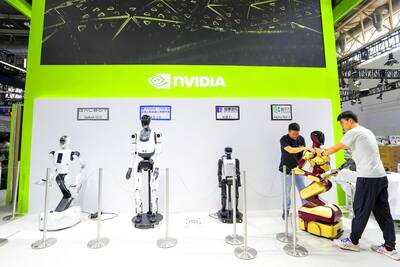Coca-Cola Co. and PepsiCo Inc. saw their share of the US soft-drink market decline in 2004, according to annual rankings released Friday.
Cadbury Schweppes PLC maker of Dr Pepper, and Cott Corp., the biggest supplier of private-label soda, increased their share of the US$65.9 billion market.
Coke, the industry leader based in Atlanta, saw its US market share drop by 0.9 percentage point to 43.1 percent. The market share for PepsiCo, Purchase, New York, declined by 0.1 percentage point to 31.7 percent. Coke's volume fell 1 percent, while Pepsi managed a volume gain of 0.4 percentage point in the US.
The market-share results, released by Beverage Digest/Maxwell, a data service that tracks soft-drink sales, reflect the continued growth of diet soft drinks and energy drinks and the steady decline of sugary colas.
The soft-drink industry overall grew 1 percent by volume in 2004. That was better than 2003, but still below the annual growth rates of between 2 percent to 4 percent during the 1990s. That drop-off has come as consumers increasingly reach for bottled water and other noncarbonated drinks.
Cadbury Schweppes, London, the industry's No. 3 player, boosted its market share by 0.2 percentage point to 14.5 percent. Cadbury was helped by a strong performance from Diet Dr Pepper, which posted a 16.2 percent increase in volume last year. However, its 7 UP brand dropped out of the top 10 soft drinks for the first time since the rankings began in 1985.
Toronto-based Cott, the biggest maker of private-label sodas and a major supplier to Wal-Mart Stores Inc and other big retailers, had another strong year. Its market share grew 0.8 percentage point to 5.5 percent.
Last year, price increases from Coke and Pepsi bottlers slowed volume growth and helped private-label sodas gain market share. The price gap in grocery stores between branded sodas and private-label drinks grew to nearly 40 percent last year -- at the high end of historical levels. Retailers have been putting more display space behind their store brands, oftentimes at the expense of Coke and Pepsi.
Coca-Cola Classic retained its spot as the No. 1 soft drink, but its share declined 0.7 percentage point to 17.9 percent and volume fell 3 percent. Pepsi-Cola, the No. 2 soda, lost 0.4 percentage point for an 11.5 percent share, and volume dropped 2.5 percent.
For 2005, Coke and Pepsi have already announced a slew of new drinks aimed at winning back consumers. Coke with Lime recently hit stores, following up on the success of Diet Coke with Lime.
Pepsi is following with lime-flavored versions of Pepsi and Diet Pepsi.
Both companies are also trying to seize on the popularity of the Splenda artificial sweetener.
A reformulated version of Pepsi One featuring Splenda rolls out shortly and Diet Coke Sweetened with Splenda debuts in May.
Last year, Diet Coke volume was up 5 percent and Diet Pepsi grew 6.7 percent by volume in the US, according to the rankings.

UNCERTAINTIES: Exports surged 34.1% and private investment grew 7.03% to outpace expectations in the first half, although US tariffs could stall momentum The Chung-Hua Institution for Economic Research (CIER, 中華經濟研究院) yesterday raised its GDP growth forecast to 3.05 percent this year on a robust first-half performance, but warned that US tariff threats and external uncertainty could stall momentum in the second half of the year. “The first half proved exceptionally strong, allowing room for optimism,” CIER president Lien Hsien-ming (連賢明) said. “But the growth momentum may slow moving forward due to US tariffs.” The tariff threat poses definite downside risks, although the scale of the impact remains unclear given the unpredictability of US President Donald Trump’s policies, Lien said. Despite the headwinds, Taiwan is likely

When Lika Megreladze was a child, life in her native western Georgian region of Guria revolved around tea. Her mother worked for decades as a scientist at the Soviet Union’s Institute of Tea and Subtropical Crops in the village of Anaseuli, Georgia, perfecting cultivation methods for a Georgian tea industry that supplied the bulk of the vast communist state’s brews. “When I was a child, this was only my mum’s workplace. Only later I realized that it was something big,” she said. Now, the institute lies abandoned. Yellowed papers are strewn around its decaying corridors, and a statue of Soviet founder Vladimir Lenin

UNIFYING OPPOSITION: Numerous companies have registered complaints over the potential levies, bringing together rival automakers in voicing their reservations US President Donald Trump is readying plans for industry-specific tariffs to kick in alongside his country-by-country duties in two weeks, ramping up his push to reshape the US’ standing in the global trading system by penalizing purchases from abroad. Administration officials could release details of Trump’s planned 50 percent duty on copper in the days before they are set to take effect on Friday next week, a person familiar with the matter said. That is the same date Trump’s “reciprocal” levies on products from more than 100 nations are slated to begin. Trump on Tuesday said that he is likely to impose tariffs

READY TO BUY: Shortly after Nvidia announced the approval, Chinese firms scrambled to order the H20 GPUs, which the company must send to the US government for approval Nvidia Corp chief executive officer Jensen Huang (黃仁勳) late on Monday said the technology giant has won approval from US President Donald Trump’s administration to sell its advanced H20 graphics processing units (GPUs) used to develop artificial intelligence (AI) to China. The news came in a company blog post late on Monday and Huang also spoke about the coup on China’s state-run China Global Television Network in remarks shown on X. “The US government has assured Nvidia that licenses will be granted, and Nvidia hopes to start deliveries soon,” the post said. “Today, I’m announcing that the US government has approved for us